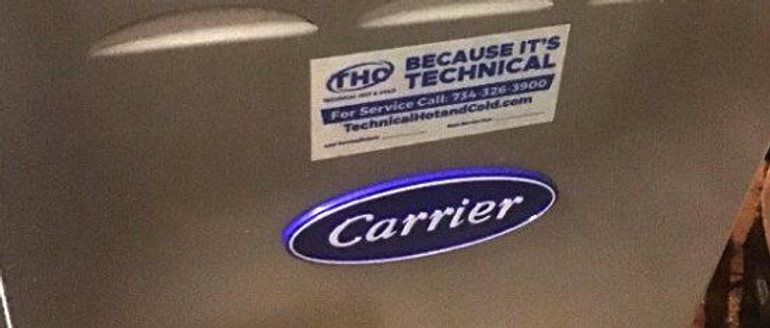Symptoms of Carrier Error Code 34
When the furnace starts and shuts off after about 20-30 seconds, there is likely a problem with the proving of flame. When a furnace starts, it checks that the combustible gas is properly lit to avoid flooding the home with unlit gases and causing damage to the unit in the form of soot.
You may notice that there will be flames and then the unit shuts off after 20-30 seconds. If the problem is caused due to the gas delivery to the burners, then you may see not flames at all and the furnace shuts off after 20-30 seconds.
What does Carrier Error Code 34 Mean?
Carrier error code 34 is an ignition proving failure. What this means is that the furnace control board did not sense a flame or adequate flame and has shut down.
What does Carrier Error Code 14 Mean?
When error code 34 occurs three times, the furnace will flash error code 14 which means Ignition Lockout and will fail to start. Error code 14 will reset in 3 hours. After repairs are made, you can turn the furnace off for 60 seconds and back on again to reset the error code quickly.
Causes of Error Code 34 and How to Fix It
1. Oxide (soot) Buildup on Flame Sensor
Take off the flame sensor and using plain steel wool, clean the flame sensor all around until any and all soot is gone. Given that flame sensors are relatively cheap, we recommend purchasing a new one as a spare for when the flame sensor eventually fails.
2. Gas Valve is Manually Shut Off
Check that the gas shut off valve on the gas line going to the furnace is turn on. Check that the On/Off switch on the valve is firmly in the ON position
3. Low Inlet Gas Pressure
- Check for proper gas pressure at the gas valve using a manometer. Natural Gas will be 5-7” water column and Propane with be 11-13” water column.
- You cna tap into the incoming side of the gas valve and measure incoming pressure there. If your valve does not have an incoming tap or is damaged, you can use a gas pipe cap with a drilled out hole that will accept your brass manometer fitting and read it at the outlet
- If incoming gas pressure is too low, then contact your utility company or propane provider to remedy this.
4. Low Outlet Gas Pressure
Check for proper gas pressure using a manometer by screwing removing the gas pressure tap cap and attaching the manometer. Once connected, fire the furnace and adjust the set screws appropriately for High Fire and Low Fire modes.
Counterclockwise rotation on the set screw lowers gas pressure, and clockwise rotation increases gas pressure. After adjusting, apply a small amount of pipe dope to test connection cap and reinsert in the gas valve.
- High Fire Mode on of 58 series Infinity furnaces will be approximately 3.5” water column.
- Low Fire Mode will be approximately 1.5” water column.
5. Controls are Not Grounded
Check that the ground wire going to the gas manifold is secured (typically a green or green/yellow wire. Check ground at blower motor/ inducer and transformer as well.
6. Defective Gas Valve
If you are getting 24V at the incoming power to the gas valve and the gas valve is not opening, then you have a defective gas valve. Likely the solenoid that controls in the internal valve has failed.
7. Flame Sensor is Not Properly Grounded
Make sure that the flame sensor is firmly attached to the mounting surface and that the metal mounting surfaces are free from corrosion.
8. Burners are Dirty and Clogged
Check burners for soot and rust buildup and make sure that the inlets and outlets are clean. Remove if dirty and clean with a wire brush and/or pipe cleaners
If you have any further questions about diagnosing these error codes or are in need of repairs parts, please reach out and contact us.
Related Articles
- How to Diagnose and Replace a Bad Flame Sensor
- How to Fix Carrier Error Code 33 or 13 After Upgrading to a Higher MERV Rated Filter
- How to Fix a Furnace That's Blowing Cold Air
- Why Is My Furnace so Loud? How to Fix a Noisy Furnace
About the Author

James Clark is the Ecommerce Manager of TechnicalHotandColdParts.com and HVAC Controls Specialist (certified in Tridium and Carrier i-Vu controls) with a decade of experience at Technical Hot & Cold. His extensive background includes service calls, installations, and providing technical support to parts customers. James has been featured in the Washington Post and continues to share his knowledge, helping homeowners navigate HVAC repairs. In his spare time, he's playing music with his children and spending too much time working on his lawn.

